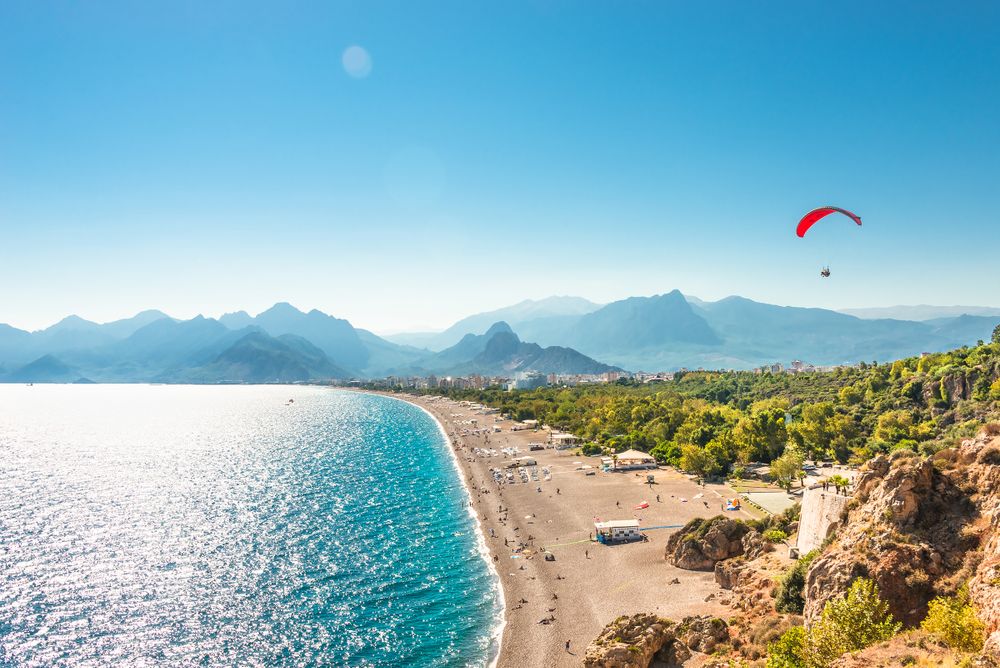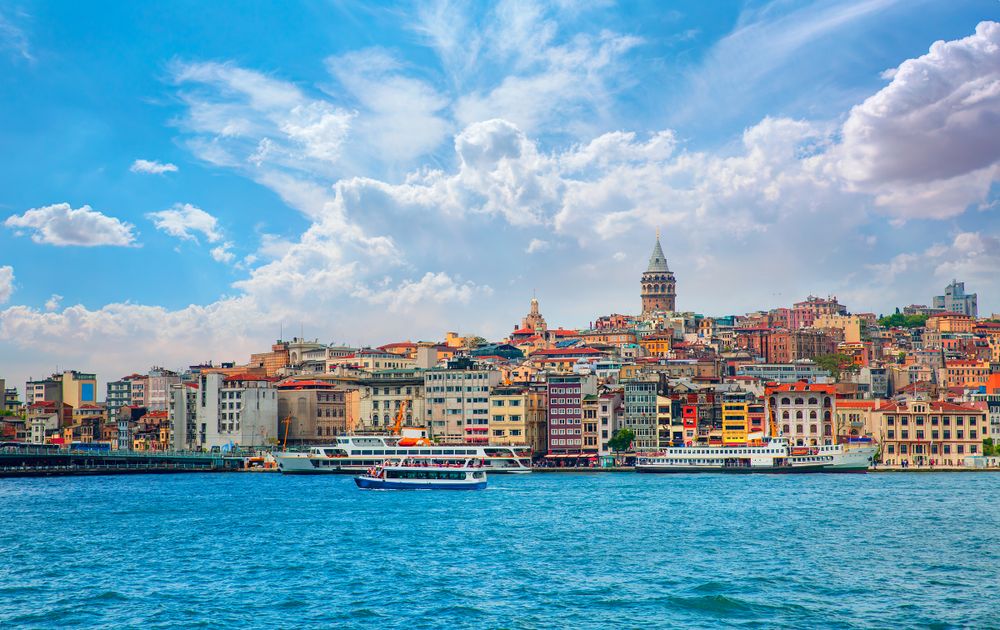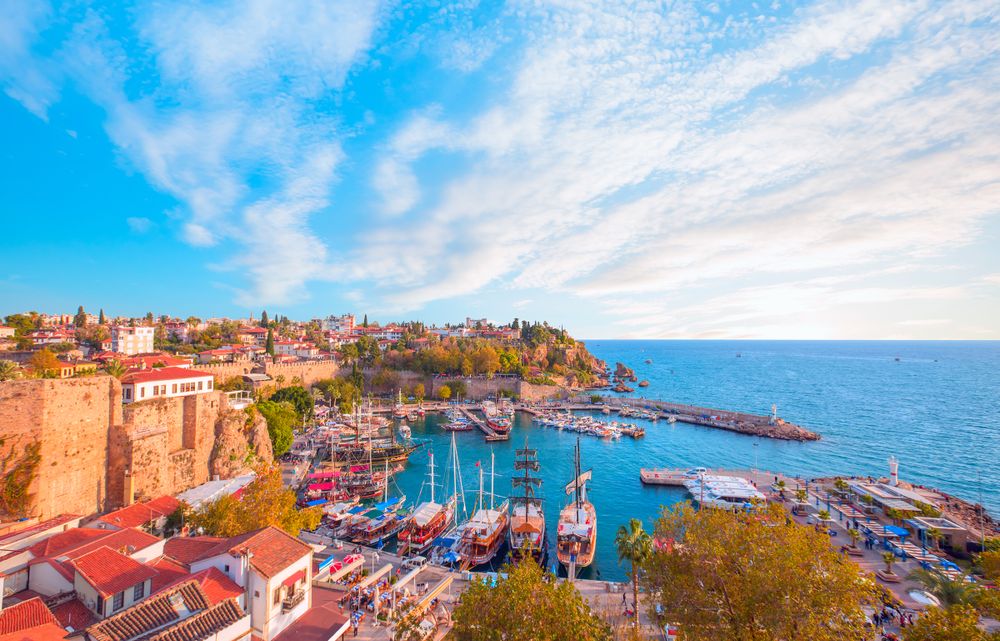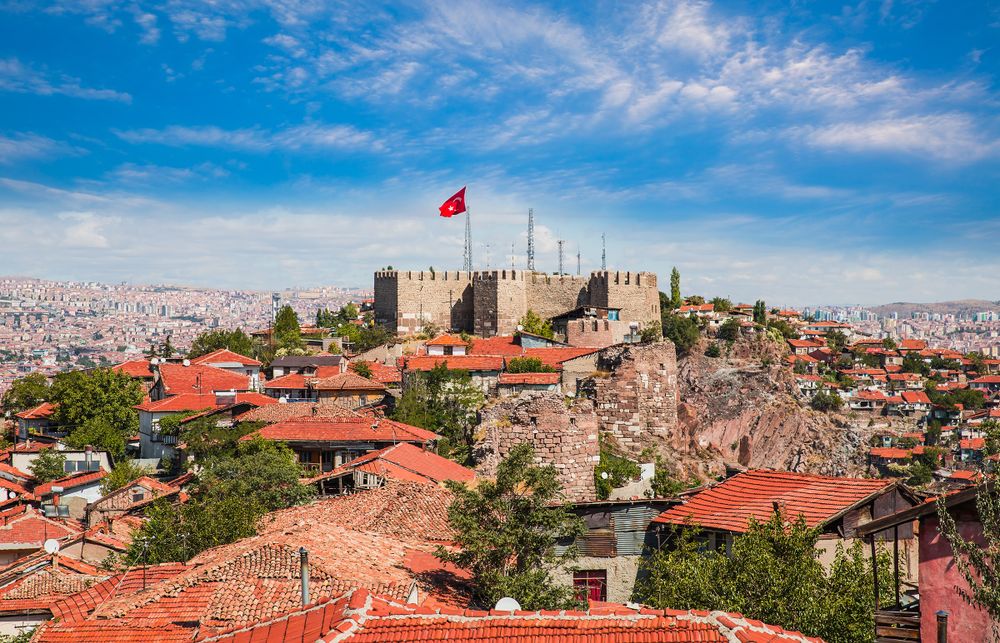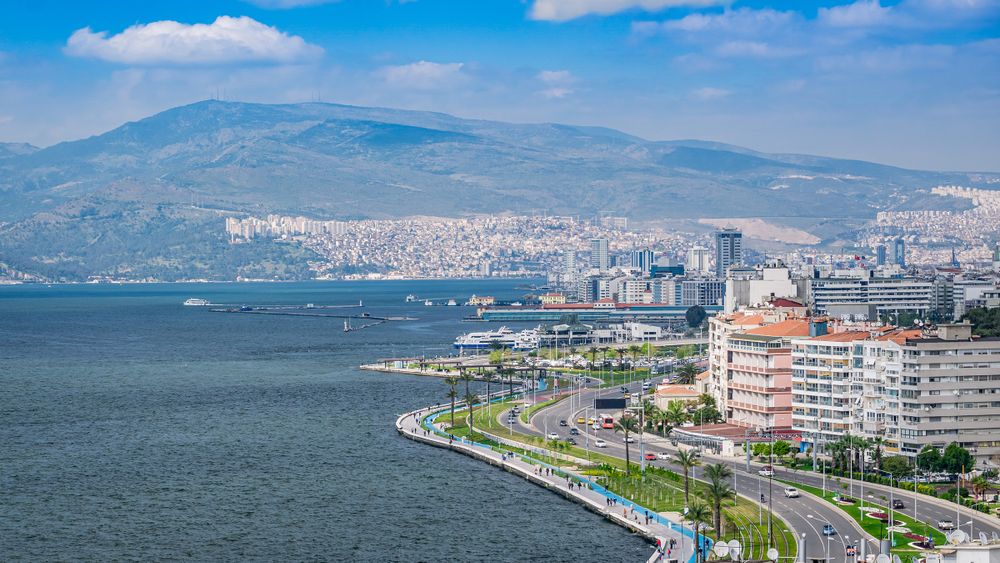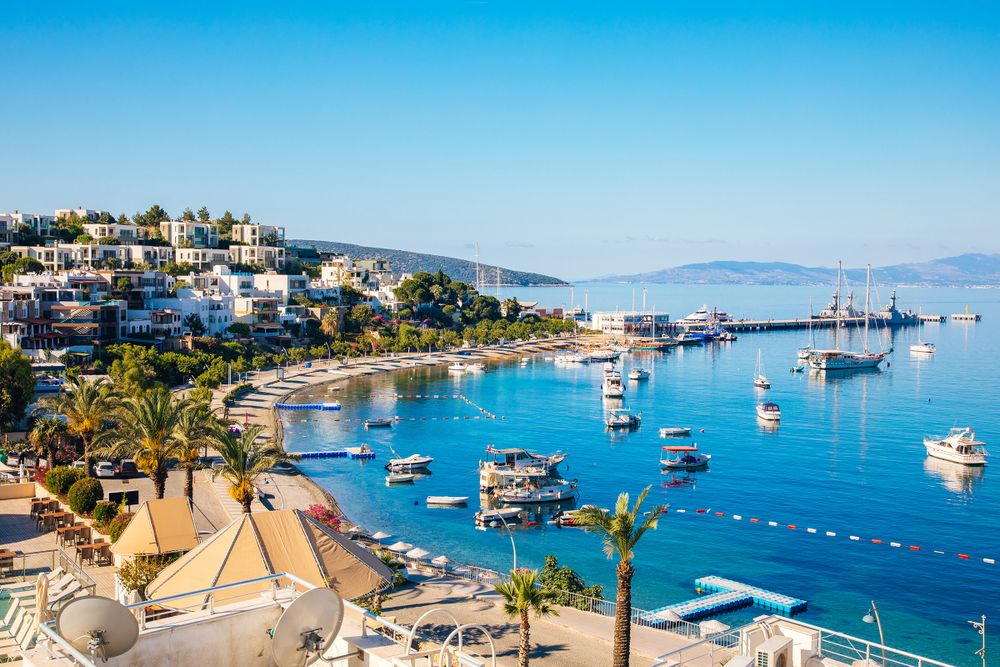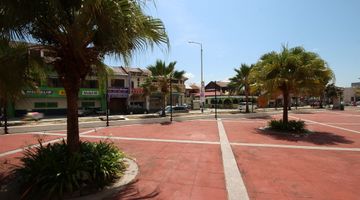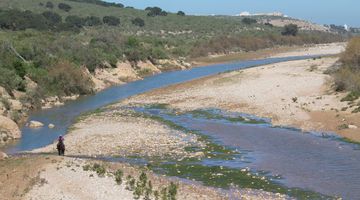Discover Turkey in 2026 with 12Go. Your Complete Travel Guide
Turkey straddles Europe and Asia, offering a heady mix of history, culture, and landscapes.
From Istanbul’s unique streets to the ancient ruins along the Mediterranean and Aegean coasts, there’s a wealth to explore.
The Turkish Riviera entices with sun-soaked beaches, while the mountains of Eastern Anatolia offer quieter escapes.
Turkish food is central to the experience, from hearty kebabs to delicate desserts. Well-connected by bus, train, and planes, Turkey is easy to navigate.
Its climate ranges from Mediterranean warmth to central Anatolian dryness, offering diverse travel experiences. Visitors are greeted with unmistakable Turkish hospitality.
Whether on a shoestring or in comfort, there’s something for everyone.
What is the best season to travel in Turkey?
The best time to visit Turkey is in spring or autumn, when the weather is mild, the countryside is blooming, and popular sites are less crowded.
These seasons are perfect for exploring ancient ruins, wandering through historical cities, or hiking through scenic landscapes.
Summer can be very hot, particularly inland and along the southern coast, making it ideal mainly for beach holidays.
Winter brings colder temperatures across much of the country, but it’s a quieter time to visit cities, enjoy cultural attractions, or hit the ski slopes in eastern Anatolia.
Overall, spring and autumn offer the most comfortable and enjoyable conditions for a varied Turkish itinerary.
Transportation in Turkey
Getting around Turkey is easy with 12Go, whether you’re heading between cities or exploring the coast.
Buses: The most common way to travel. Routes connect major cities and tourist spots like Istanbul to Göreme, Alanya to Marmaris, and Bodrum to Van. Multiple operators and stations make booking simple.
Flights & Transfers: 12Go also lists domestic flights and private transfers for faster or more comfortable trips, like Nevşehir to Kayseri or Goreme to Nevşehir.
Ferries: Explore the Aegean and Mediterranean coasts with ferry routes between key ports.
Popular Routes in Turkey
-
Alanya to Marmaris. Travel between two of the Mediterranean’s favorite resort towns, known for beaches and nightlife. This route is perfect for those wanting a mix of relaxation and entertainment. Travel time: 4 to 9 hours, depending on route and stops. Starting fare: ≈ $14 (bus)
-
Istanbul to Mersin. Connect the cultural capital with a major city on the southern coast. Mersin is a gateway to seaside escapes and a different side of Turkey.
Travel time: ~13 hours by bus. Starting fare: ~USD 23 -
Alanya to Istanbul. Go from the calm of the Mediterranean coast to the energy of Turkey’s biggest city. A direct way to combine beach time with urban exploration.
Travel time: ~15 hours by bus. Starting fare: $22.13 -
Istanbul to Sofia. A straightforward route linking Turkey and Bulgaria. Popular with travelers who want to explore two countries in one trip.
Travel time (bus): about 6 hours. Starting fare: $34 (bus) -
Istanbul to Goreme. Head straight into the heart of Cappadocia, famous for hot-air balloons and cave hotels. This route is a favorite for anyone seeking a unique travel experience. Travel time by bus: 12 hours. Starting fare: Buses 28 USD
Where to travel in Turkey?
Istanbul
Istanbul is a city of contrasts, where East meets West and history sits alongside modern life. Getting around is easy with the city’s buses, trams, and ferries.
Visitors to the Blue Mosque or Hagia Sophia should dress respectfully—women covering their hair and both men and women avoiding shorts.
Tipping remains customary in restaurants and cafés, typically around 10–15 percent.
For a quieter glimpse of the city, wander through Arnavutköy, with its wooden Ottoman houses and leafy streets.
Panoramic views are best enjoyed from the Galata Tower, which offers sweeping vistas across Istanbul’s skyline.
The city’s street food scene is not to be missed, from sesame-crusted simit to döner and sweet baklava.
Markets such as the Grand Bazaar and Spice Bazaar provide a unique taste of local life.
A Whirling Dervishes ceremony offers a fascinating insight into Istanbul’s spiritual traditions.
Even if you spend a week here, you won't be able to capture the full beauty of the city, whose layers of culture and history leave a lasting impression.
Where to go from Istanbul?
Istanbul to Cappadocia
Istanbul to Antalya
Istanbul to Ankara
Istanbul to Sofia
Istanbul to Bucharest
Antalya
Antalya, perched on Turkey’s Turquoise Coast, offers a striking combination of sun-drenched beaches, history, and culture.
Lara and Konyaaltı beaches draw visitors with their clear waters and sweeping views, while the Old Town, Kaleiçi, charms with narrow streets, Ottoman-era houses, and small cafés.
The city’s heritage is palpable at sites such as Hadrian’s Gate, Yivli Minare, and the Antalya Museum, which traces the region’s long history.
Nature is never far away: the Düden Waterfalls provide a peaceful retreat, and the Tunektepe Teleferik cable car offers commanding views across the city and coast.
Those seeking adventure can try scuba diving, horseback riding, or a round of golf, while day trips to the ancient ruins of Aspendos, Perge, and Myra reveal the area’s rich archaeological past.
Markets, local cuisine, and the rhythm of everyday life in Antalya add texture to any visit.
Where to go from Antalya?
Antalya to Alanya
Antalya to Istanbul
Antalya to Cappadocia
Antalya to Pamukkale
Antalya to Fethiye
Ankara
Ankara, Turkey’s capital, is a city where history and modern life intersect in fascinating ways. Situated in central Anatolia, it experiences hot, dry summers and cold winters.
The city’s skyline is punctuated by landmarks such as Ankara Castle, which provides sweeping views over the old town, and Atakule Tower, a modern observation point offering a 360-degree panorama.
History buffs are drawn to Anıtkabir, the monumental mausoleum of Mustafa Kemal Atatürk, and the Museum of Anatolian Civilizations, home to relics from Turkey’s ancient cultures.
The impressive Kocatepe Mosque showcases Ottoman-inspired architecture, while the Ulus district preserves a sense of the city’s traditional past through its markets and narrow streets.
Outdoor spaces such as Gençlik Park and Lake Eymir offer moments of tranquility and recreation amid urban life.
Culinary experiences are equally varied, with local specialties like simit, döner kebab, and lahmacun reflecting Ankara’s rich gastronomic heritage.
For shopping and entertainment, ANKAmall provides a modern contrast to the city’s historic sites. Visitors are well-served by a reliable public transport system, including buses, metro, and taxis, while cultural etiquette encourages respect in sacred and historic spaces.
Where to go from Ankara?
Ankara to Istanbul
Ankara to Cappadocia
Ankara to Antalya
Ankara to Mersin
Ankara to Kars
Izmir
Izmir, historically known as Smyrna, sits gracefully on Turkey’s Aegean coast, blending ancient heritage with a modern, cosmopolitan atmosphere.
Founded around 3000 BC, the city bears traces of Roman, Byzantine, and Ottoman influence, visible in landmarks such as the Agora of Smyrna, Kadifekale (Velvet Castle), Izmir Archaeology Museum, and Izmir Ethnography Museum.
Konak Square, with its iconic Clock Tower, pulses at the heart of the city, while Kemeraltı Bazaar offers a labyrinth of shops, spices, and handcrafted goods that reveal the local rhythm of life.
Along the coast, the Kordon Promenade invites leisurely walks with expansive sea views, especially at sunset. Izmir’s culinary scene is rich and varied: boyoz, stuffed mussels, kokoreç, and local wines showcase the city’s gastronomic traditions.
Nearby, destinations like Ephesus, Şirince Village, and the resort towns of Çeşme and Alaçatı make for easy day trips, combining history and natural beauty.
The nightlife is energetic, particularly around student-frequented districts and seaside cafés.
Travel is straightforward via Adnan Menderes International Airport, with convenient shuttles and trains to the city centre. Spring and autumn, with mild weather and festivals such as the Izmir Youth Carnival, remain the ideal times to explore this Aegean gem, where history, culture, and seaside leisure intersect effortlessly.
Where to go from Izmir?
Izmir to Istanbul
Izmir to Pamukkale
Izmir to Kusadasi
Izmir to Antalya
Izmir to Bodrum
Cappadocia
Cappadocia, in central Turkey, is a landscape like no other, sculpted over millions of years by volcanic eruptions and erosion into fairy chimneys, cave dwellings, and ancient frescoed churches.
The towns of Göreme and Uçhisar provide convenient bases for exploration, with Göreme’s open-air museum and Uçhisar Castle offering glimpses of the region’s history and panoramic views across the valleys.
Avanos, perched on the Kızılırmak River, is a centre for traditional pottery, where visitors can try their hand at the craft.
A sunrise hot air balloon ride is a signature experience, providing a spectacular perspective over the surreal terrain.
For those willing to venture underground, Derinkuyu and Kaymaklı reveal ancient subterranean cities once used for protection.
Hiking through the Rose, Red, and Ihlara valleys allows travellers to immerse themselves in both natural beauty and historical intrigue.
Guided tours can cover key attractions efficiently for those short on time. Staying in a cave hotel offers an authentic experience, marrying modern comfort with traditional architecture.
Local cuisine, from testi kebab to gözleme, complements the sensory adventure with bold regional flavours.
Where to go from Cappadocia?
Cappadocia to Antalya
Cappadocia to Istanbul
Cappadocia to Pamukkale
Cappadocia to Izmir
Cappadocia to Ankara
Bodrum
Bodrum, once a quiet fishing village, has grown into a stylish Aegean destination that attracts both locals from Istanbul and international travelers.
Its charm comes from blending history, culture, and modern luxury, with highlights like the 15th-century Bodrum Castle, the ancient theatre of Halicarnassus, and the Mausoleum at Halicarnassus.
Visitors can stroll along Bodrum Marina, shop at the lively bazaars, or enjoy traditional Turkish cuisine at seaside restaurants.
The beaches, from Gumbet to quieter coves, offer both relaxation and water sports, while gulet cruises let you explore the coastline and nearby islands.
The nightlife is lively, with beach clubs, bars, and music venues keeping the energy going long after sunset. Hiking to the ancient city of Pedasa provides both exercise and a glimpse into the region’s past, with stunning views along the way.
From sun-drenched beaches to historical ruins and designer boutiques, Bodrum offers something for every traveler.
Where to go from Bodrum?
Bodrum to Istanbul
Bodrum to Antalya
Bodrum to Marmaris
Bodrum to Pamukkale
Bodrum to Cappadocia
Food in Turkey
If you’re in Turkey, the food alone is worth the trip.
What to eat in Turkey?
Start with kebabs—from juicy döner slices to grilled şiş skewers, there’s a flavor for every meat lover.
Don’t skip the meze, a selection of small plates like hummus, haydari (herby yogurt), and spicy ezme that are perfect to share.
Try pide, the Turkish take on pizza, with toppings ranging from cheese to minced meat or vegetables.
For something sweet, baklava is a must—layers of flaky pastry, nuts, and syrup that hit the perfect spot.
Breakfast fans should try menemen, eggs cooked with tomatoes and peppers, and for something lighter, lahmacun—thin dough with spiced minced meat rolled up with salad.
And, of course, make time for Turkish tea and coffee; strong, rich, and part of the daily rhythm here.
FAQ
1. Do I need a visa for Turkey?
It depends on your nationality. Many travelers can get an e-visa online before arrival—quick and easy.
2. What currency is used?
The Turkish Lira (TRY). Credit cards are widely accepted, but it’s good to have cash for markets, small shops, and tea or coffee stops.
3. Is Turkey safe for tourists?
Yes, most tourist areas are safe. Standard travel precautions apply: watch your belongings in crowded places and avoid risky areas at night.
4. What language do people speak?
Turkish is the official language. In tourist spots, English is commonly understood, but learning a few basic Turkish phrases helps.

